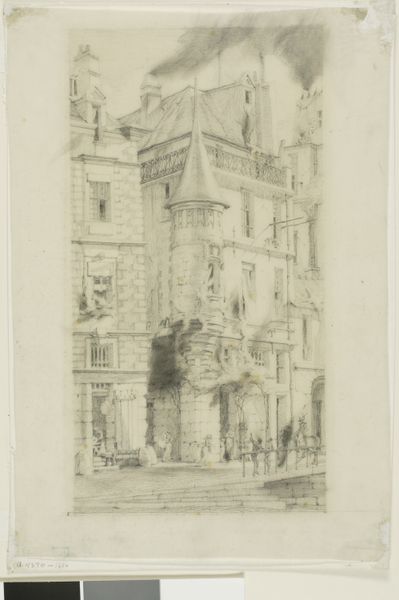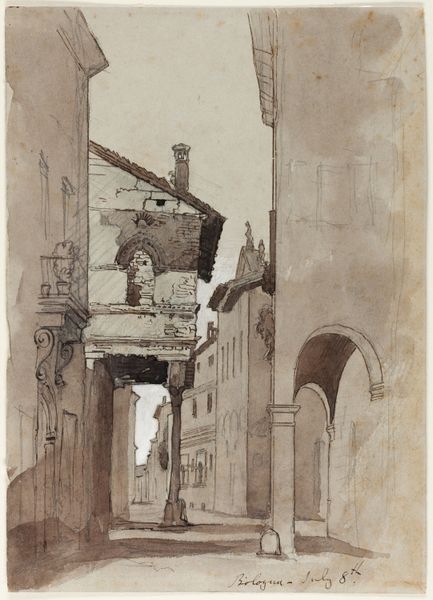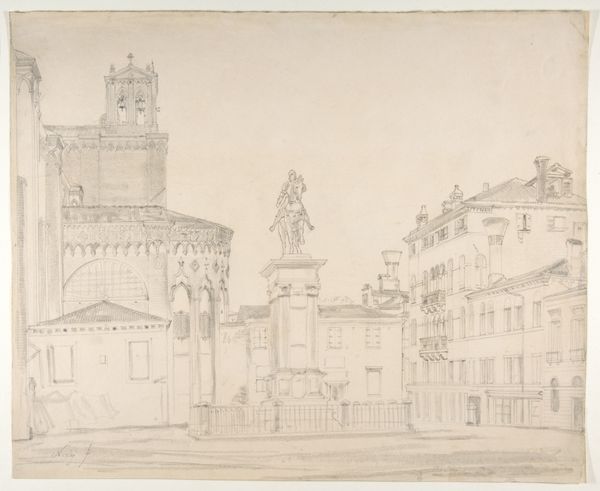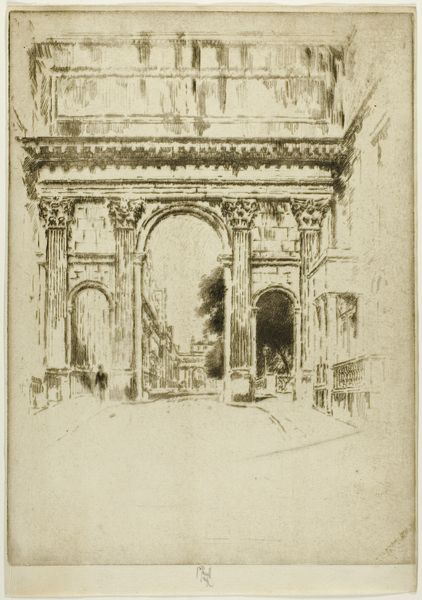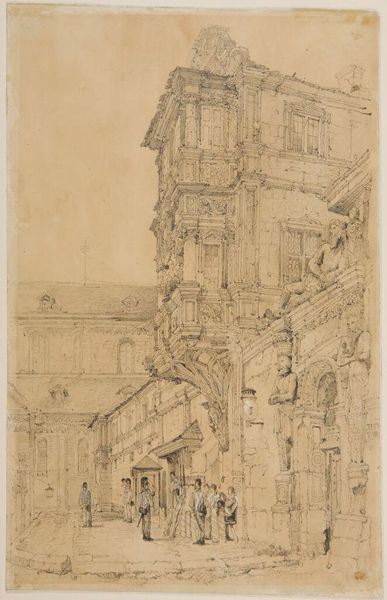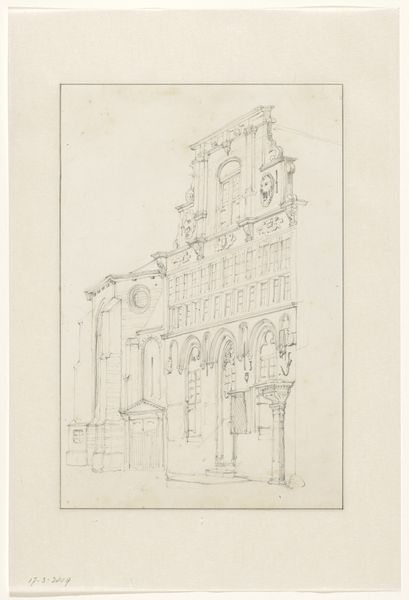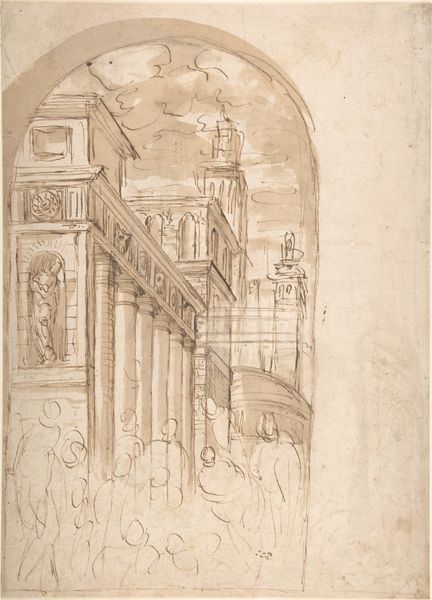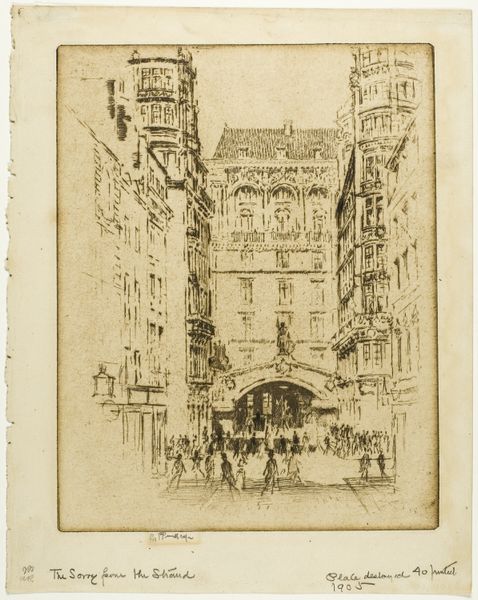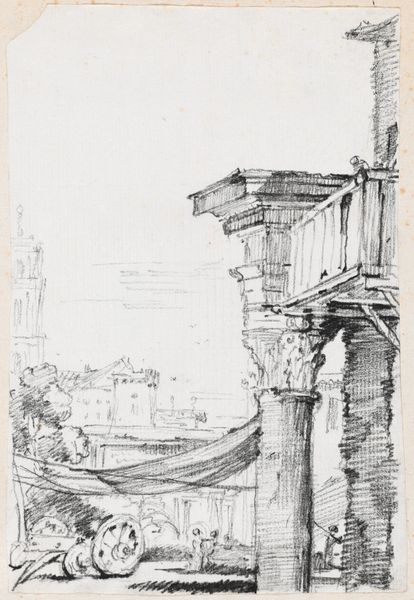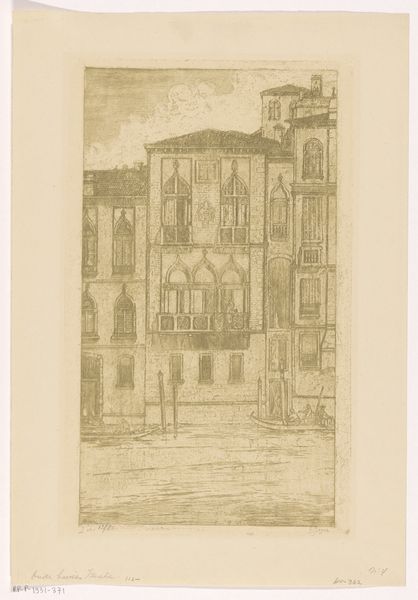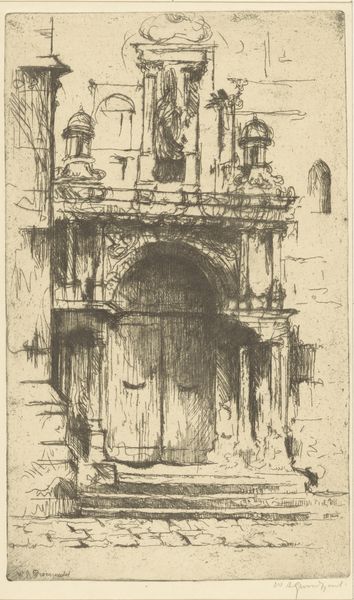
drawing, pencil
#
drawing
#
geometric
#
pencil
#
line
#
cityscape
Dimensions: sheet: 20.7 x 14.5 cm (8 1/8 x 5 11/16 in.)
Copyright: National Gallery of Art: CC0 1.0
Curator: Here we have "Figures on a Roman Piazza," a delicate pencil drawing by Robert Smith. The buildings are rendered with fine lines, giving a sense of grand architecture in soft focus. What's your immediate reaction to this cityscape? Editor: My first thought is, "quiet." There’s a certain hushed quality, as if Smith captured a moment of stillness within the bustling city. The subtle shading makes it seem as if dawn is breaking over the piazza, softening everything with its light. Curator: Precisely. The medium lends itself well to such ephemeral moments. Robert Smith, although perhaps lesser known, engaged with the conventions of depicting classical architecture which, since the Renaissance, had been a symbol of power and civic virtue. Smith presents us with a very specific historical perspective of Rome, almost dreamlike. Editor: Absolutely. The figures, though small, play an important part. Look at their garments—the classical draping—which adds another layer to this interplay of space and the human form. But I wonder, how do these historical symbols interact with a contemporary viewer's understanding of power and public spaces? Curator: That's the crucial question, isn’t it? Historically, the architecture depicted served very particular socio-political roles, designed to project authority and civic order. I find myself thinking of the work of Gramsci, who insisted that culture, including artwork, served a critical role in maintaining power. By reproducing classical scenes like this, it subtly reinforces a particular image of authority. How can we use artworks like this drawing to critique the reproduction of such narratives, making accessible the powerful, and at times overwhelming symbolism, present in urban environments? Editor: A very important consideration. The drawing's soft aesthetic might even create a sense of distance from those more immediate implications. But in showing these places, it almost demands an awareness of the stories imprinted in them. How was this space created? For whom? And at whose expense? Curator: Smith's delicate linework belies complex histories. I think this is part of the reason why such drawings continue to captivate and intrigue us today. Editor: Indeed. By acknowledging the many stories these architectural marvels tell us, from ancient empires to more modern political agendas, that the image can provoke rich discussions and reveal new ways of encountering familiar historical themes.
Comments
No comments
Be the first to comment and join the conversation on the ultimate creative platform.
